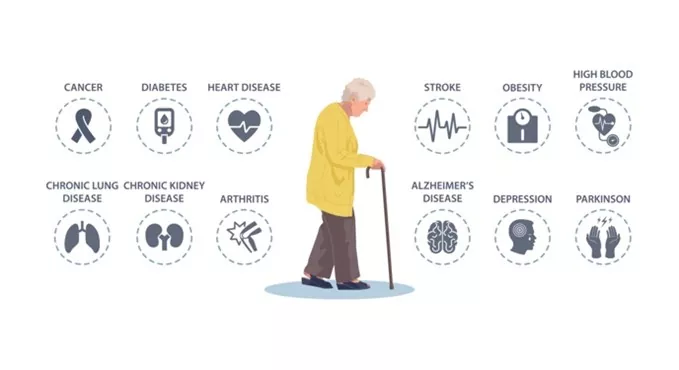The Impact of Pre-existing Conditions on Final Expense Insurance

Sep
The Impact of Pre-existing Conditions on Final Expense Insurance
As we navigate through life, planning for the future is paramount. One of the vital aspects of this planning involves ensuring that our loved ones are not burdened by unforeseen expenses upon our passing. That’s where final expense insurance comes into play. At Final Expense Brokerage of America, we believe in empowering our clients with knowledge, enabling them to make informed choices. One frequent concern among many is how pre-existing medical conditions may affect their insurance application and premiums. This article seeks to shed light on this critical topic, guiding you toward a more secure future.
Definition of Pre-existing Conditions
Understanding what insurance companies mean by “pre-existing conditions” is the first step in grasping how they might impact your final expense insurance.
A. What Exactly is a Pre-existing Condition?
– In the simplest terms, a pre-existing condition is a health issue, ailment, or disease that an individual was diagnosed with or showed symptoms of before the start date of their insurance policy.
B. Timeframe Matters: The Look-back Period
– Insurance companies typically have a “look-back” period. This is a timeframe during which they evaluate your medical records for pre-existing conditions. It can vary from company to company but usually spans 2-5 years prior to the application.
C. Common Examples of Pre-existing Conditions
– Chronic Diseases: Conditions like diabetes, high blood pressure, or asthma which require long-term management.
– Cardiovascular Issues: Including heart disease, previous heart attacks, and certain congenital heart conditions.
– Respiratory Conditions: Such as chronic obstructive pulmonary disease (COPD) or severe asthma.
– Neurological Disorders: Conditions like multiple sclerosis, Parkinson’s disease, and others.
– Cancers: Especially if they’ve been diagnosed or treated within the look-back period.
– Mental Health Concerns: This includes conditions such as severe depression, bipolar disorder, and some others, depending on the insurer.
D. Pre-existing Doesn’t Always Mean Denied
– It’s a misconception that having a pre-existing condition automatically disqualifies one from getting insurance. It might affect the terms or premiums, but many companies offer policies tailored for individuals with specific health challenges.
E. The Importance of Full Disclosure
– While it might be tempting to omit or downplay medical conditions during the application process, this can lead to denied claims later on. Full disclosure ensures that your policy is valid and will provide the intended support for your loved ones.
How do Insurance Companies View Pre-existing Conditions?
As you consider final expense insurance, it’s crucial to step into the shoes of the insurers. Understanding their perspective helps demystify the application and approval process, especially when pre-existing conditions come into play.
A. Risk Assessment and Underwriting
– Risk Profiling: Insurance is a business of risk management. Insurers use underwriting to assess how much of a risk an applicant presents. Pre-existing conditions, in their eyes, might indicate a higher probability of the insurer having to pay out the policy sooner.
– Underwriting Process: This is the procedure insurance companies use to evaluate the risk and decide the terms of a policy. It’s during this process that pre-existing conditions are most scrutinized.
B. Categories of Risk
– Preferred: Individuals in excellent health with no significant medical history. They often get the best rates.
– Standard: People in average health with maybe minor health issues but nothing major.
– Substandard: Those with more serious health concerns or pre-existing conditions. They might pay higher premiums or have modified policy terms.
C. Concerns of Insurers
– Life Expectancy: Pre-existing conditions could potentially shorten life expectancy, which might mean the insurer will have to pay the death benefit sooner.
– Medical Costs: Some conditions require expensive treatments or medications, potentially increasing the policy’s cost.
– Future Health Uncertainties: Conditions like early-stage hypertension or pre-diabetes could lead to more severe health issues down the line.
D. Not All Conditions are Viewed Equally
– Different conditions come with varying levels of risk. For instance, a well-managed type 2 diabetes might be viewed differently than untreated type 1 diabetes.
– Insurers often have medical consultants to understand the nuances of each condition and its implications better.
E. Navigating the High-Risk Label
– While being labeled “high-risk” due to a pre-existing condition might seem daunting, there are still options available. Specialized policies and insurers cater specifically to higher-risk individuals, ensuring they have access to the coverage they need.
Types of Final Expense Insurance in Relation to Health
The world of final expense insurance is not one-size-fits-all. Depending on your health and specific pre-existing conditions, there are different policy types you might consider.
A. Guaranteed Issue Policies
– Description: As the name implies, these policies guarantee approval without any medical exams or detailed health questions.
– Best For Those with severe health issues or significant pre-existing conditions. It’s a sure way to get coverage, even if other options are unavailable.
– Pros:
– No medical exam or questionnaire.
– Quick approval process.
– Cons:
– Typically, more expensive than other policy types.
– Often has a waiting period before full benefits are available.
B. Simplified Issue Policies
– Description: These policies might ask a few health-related questions, but they don’t require a medical exam. They aim to streamline the application process.
– Best For Those with minor to moderate health issues. If you have a condition that’s well-managed, this could be an ideal fit.
– Typical Medical Questions:
– Have you been diagnosed with a terminal illness?
– Are you currently residing in a nursing facility?
– Have you been diagnosed or treated for HIV/AIDS?
– Note: Questions vary by insurer and might concern recent hospitalizations, specific conditions, or treatments.
– Pros:
– No medical exam.
– Broader coverage and better rates than guaranteed issue policies (for most).
– Cons:
– Some health conditions might lead to higher premiums or declined coverage.
– Not as inclusive as guaranteed issue policies.
C. The Middle Ground: Graded Benefit Policies
– Description: For those who don’t qualify for simplified issues but find guaranteed issues too costly, graded benefit policies might be an answer. They often have a waiting period but with more favorable terms than guaranteed issue policies.
– Pros:
– Provides a middle-ground solution for coverage.
– Can offer better rates than guaranteed issue policies.
– Cons:
– Partial benefits during the initial years.
– Might still come with a slightly higher premium than simplified issue policies.
The Waiting Period: What It Is and How It Works
Understanding the “waiting period” or “graded death benefit” is crucial when considering policies, especially for those with pre-existing conditions.
A. Definition of the Waiting Period
– The waiting period, sometimes known as the graded death benefit period, is a predetermined amount of time after a policy starts during which the full death benefit won’t be paid out if the insured passes away from natural causes.
B. Why Do Waiting Periods Exist?
– Risk Management: Insurance companies use waiting periods as a way to mitigate risks, especially with guaranteed issue policies.
– Protecting Policy Integrity: It prevents individuals with terminal illnesses from buying a policy and having the full death benefit paid out immediately.
C. Typical Duration of Waiting Periods
– Most waiting periods for final expense insurance policies range from 2 to 3 years.
– If the insured passes away during this time, beneficiaries might receive a percentage of the death benefit or a refund of paid premiums, depending on the policy terms.
D. Exceptions to the Waiting Period
– Death resulting from an accident is usually exempt from the waiting period. This means that even if the insured dies within the waiting period due to an accident, the full death benefit will generally be paid out.
– Some policies might offer increasing benefits as each year of the waiting period passes.
E. The Importance of Understanding Policy Details
– Not all waiting periods are structured the same way. It’s crucial to understand what percentage of the death benefit is available during the waiting period.
– Reading and understanding the policy’s fine print ensures you and your beneficiaries aren’t caught off guard.
Conclusion
Making Informed Decisions with the Help of Final Expense Brokerage of America
Choosing final expense insurance, especially with a pre-existing condition, can seem like a daunting task. However, armed with the right knowledge and the support of trusted experts, you can make decisions that ensure peace of mind for you and your loved ones.
Key Takeaways
– Understanding Your Needs: Recognize how your health, especially any pre-existing conditions, might influence your policy choices.
– The Landscape of Policies: From guaranteed issue to simplified issue policies, there’s a spectrum of options available, each with its own benefits and considerations.
– Insurer Perspectives: Grasping how insurers view risk helps in anticipating potential premium costs and understanding policy terms.
– Importance of Shopping Around: Every insurer is different. Comparing policies ensures you get the best terms and rates for your unique situation.
How does Final Expense Brokerage of America Assist?
– Expert Guidance: With a deep understanding of the insurance landscape, our team can guide you through the intricacies of different policies, ensuring you make informed decisions.
– Tailored Solutions: Every individual is unique. We pride ourselves on listening to your specific needs and matching you with policies that align with your health, budget, and coverage desires.
– Transparency: Our commitment is to provide honest and clear advice. With us, you can be confident in the knowledge that you’re getting a policy without hidden terms or unexpected conditions.
– Broad Network: As a brokerage, we have connections with multiple insurance providers, allowing us to offer you a wide array of choices. This ensures you’re not limited and can find the policy that’s the perfect fit.
Remember, insurance is not just a financial decision; it’s an expression of care and foresight. At Final Expense Brokerage of America, we’re here to ensure that expression resonates with clarity, confidence, and compassion.
With that, our comprehensive guide on final expense insurance in the context of pre-existing conditions comes to a close. We hope this has been insightful and would love to answer any further questions or address concerns you might have.


